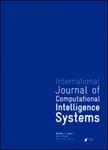版权所有:内蒙古大学图书馆 技术提供:维普资讯• 智图
内蒙古自治区呼和浩特市赛罕区大学西街235号 邮编: 010021

作者机构:Shanghai Normal Univ Coll Informat Mech & Elect Engn 100 Haisi Rd Shanghai 201418 Peoples R China Donghua Univ Coll Informat Sci & Technol 2999 North Renmin Rd Shanghai 201620 Peoples R China Univ Politecn Madrid Escuela Tecn Super Ingn Ind Madrid Spain
出 版 物:《INTERNATIONAL JOURNAL OF COMPUTATIONAL INTELLIGENCE SYSTEMS》 (国际计算智能系统杂志)
年 卷 期:2022年第15卷第1期
页 面:1-13页
核心收录:
学科分类:08[工学] 0812[工学-计算机科学与技术(可授工学、理学学位)]
基 金:National Natural Science Foundation of China [6210020445, 61901104] Natural Science Foundation of Shanghai [21ZR1446900] Shanghai Sailing Program [19YF1436800]
主 题:Essential tremor Activity recognition Stacked denoising autoencoder Acceleration data Deep learning
摘 要:Human activity recognition (HAR) has received more and more attention, which is able to play an important role in many fields, such as healthcare and intelligent home. Thus, we have discussed an application of activity recognition in the healthcare field in this paper. Essential tremor (ET) is a common neurological disorder that can make people with this disease rise involuntary tremor. Nowadays, the disease is easy to be misdiagnosed as other diseases. We have combined the essential tremor and activity recognition to recognize ET patients activities and evaluate the degree of ET for providing an auxiliary analysis toward disease diagnosis by utilizing stacked denoising autoencoder (SDAE) model. Meanwhile, it is difficult for model to learn enough useful features due to the small behavior dataset from ET patients. Thus, resampling techniques are proposed to alleviate small sample size and imbalanced samples problems. In our experiment, 20 patients with ET and 5 healthy people have been chosen to collect their acceleration data for activity recognition. The experimental results show the significant result on ET patients activity recognition and the SDAE model has achieved an overall accuracy of 93.33%. What s more, this model is also used to evaluate the degree of ET and has achieved the accuracy of 95.74%. According to a set of experiments, the model we used is able to acquire significant performance on ET patients activity recognition and degree of tremor assessment.